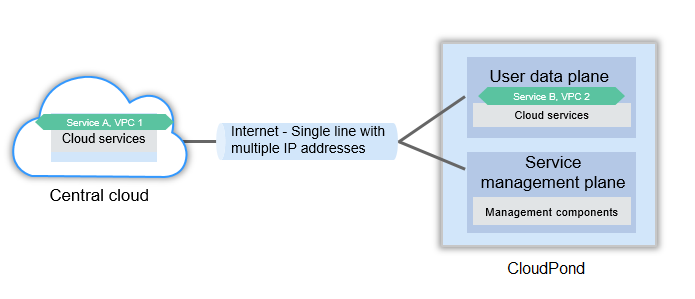Hybrid Deployment
Applications deployed at the edge and on the cloud do not need to communicate with each other. So, configure the minimum bandwidth for edge-cloud communications and pay for the EIPs by traffic. Services are processed in different VPCs based on their types. Edge-cloud networking with different reliability levels can be configured.
Background
A customer has deployed their company website and WeChat mini program on Huawei Cloud. They plan to migrate their OA services to the cloud by using CloudPond deployed in their data center. The service status is as follows:
- OA services cannot be migrated to the public cloud because of the service purposes. Services (websites and WeChat mini programs) deployed on the public cloud are running stably and do not need to be migrated to CloudPond.
- The service purposes and people who use OA services seldom change. So the service performance is predictable, and the services are not required for high reliability (available: 5 working days x 8 hours + some holidays).
- The public network bandwidth of the data center is limited and is shared with services of other domains.
Networking Configuration
The recommended edge-cloud networking is shown in Figure 1.
Key Points
- Services deployed at the edge and on the cloud do not need to communicate with each other, so they are located in different VPCs. (Services on the cloud are for external publicity, and services at the edge are used by employees.)
- CloudPond EIPs use the cloud's shared bandwidths because the customer data center 's public network only has limited bandwidths that are shared with services of other domains.
- EIP billing by traffic is recommended for the default settings of edge-cloud communications because the cloud data plane does not need to communicate with the OA services to be deployed.
- Internet single-line connection is used because edge OA services are not required for high reliability. If the management plane is disconnected, edge services can still run properly but cannot be managed by the central cloud, which has a small impact on the entire service system.
Feedback
Was this page helpful?
Provide feedbackThank you very much for your feedback. We will continue working to improve the documentation.See the reply and handling status in My Cloud VOC.
For any further questions, feel free to contact us through the chatbot.
Chatbot






